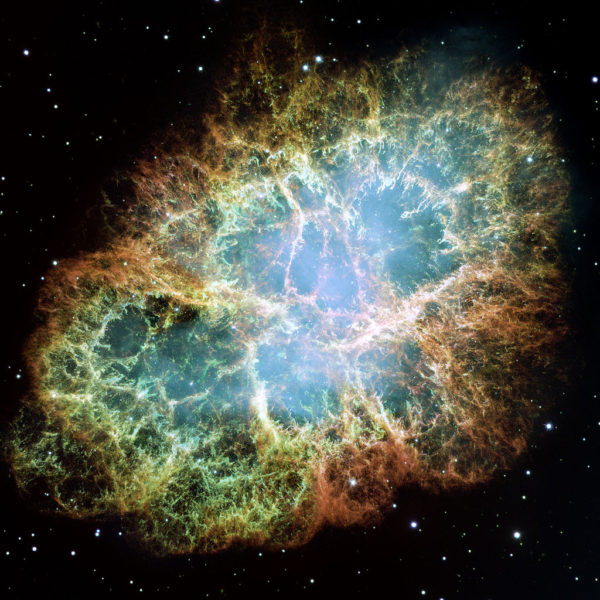"My eureka moment was in the dead of night, the early hours of the morning, on a cold, cold night, and my feet were so cold, they were aching. But when the result poured out of the charts, you just forget all that. You realize instantly how significant this is—what it is you’ve really landed on—and it’s great!" -Jocelyn Bell-Burnell, on the discovery of the first pulsar
Nearly 1,000 years ago, in 1054, a massive star in the constellation of Taurus, invisible at some 6,500 light years away, exploded in a type II supernova. Today, its remnant measures 10 light years across, while its inner core has a rapidly spinning neutron star that rotates in a mere 30 milliseconds.
 Mosaic of the Crab Nebula, with different colors highlighting different elements. Image credit: NASA, ESA, J. Hester and A. Loll (Arizona State University).
Mosaic of the Crab Nebula, with different colors highlighting different elements. Image credit: NASA, ESA, J. Hester and A. Loll (Arizona State University).
Hubble and Chandra not only reveal the nebular structure, but also show the inner, pulsing region, revealing matter accelerated by electrons moving at nearly the speed of light. It's a beautiful show unlike anything we've ever seen.
 The X-ray emissions (blue/purple) of the pulsar in the crab nebula, shown optically in red. Image credit: Optical: NASA/HST/ASU/J. Hester et al. X-Ray: NASA/CXC/ASU/J. Hester et al.
The X-ray emissions (blue/purple) of the pulsar in the crab nebula, shown optically in red. Image credit: Optical: NASA/HST/ASU/J. Hester et al. X-Ray: NASA/CXC/ASU/J. Hester et al.
Go get the full story -- video-rich today -- on this edition of Mostly Mute Monday!

That was an absolute jaw-dropper when I saw that on NASAs Astronomy Picture of the Day site for July 8. Not so long ago, we may not have been aware of the presence of the shock waves, and winds created. Our grasp and use of technology is advancing very well.
If the object is 6500 light years away, how c an we see it only 1000 years later???
Because the event happened 6500 light years away 1000 years ago, with the light taking 6500 years to get here.
Roy, what the hell is your problem here?